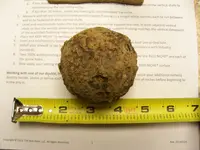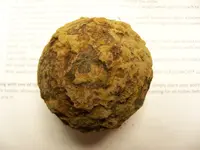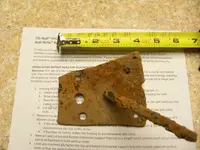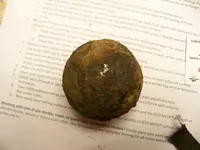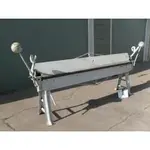Chipping some rustcrust off, on directly-opposite sides of the ball, is the simplest way to measure its diameter, by using a caliper.
Your dilemma about the purpose of the circular plug is why super-precise size-measuring and weighing is crucially needed. It tells us whether the ball is a hollow one or a solid-bodied one, in addition to telling us whether it is an artillery ball or not.
In the photo, your metal ball next to the tape-measure appears to be "about" 2.5 to 2.75 inches in diameter, if you imaginarily strip off the thick rustcrust. You said the ball weighs 3 pounds. A solid (not hollow) cast-iron ball which weighs precisely 3.0 pounds will be 2.819-inches in diameter, according to the final chart in the US Ordnance Manual of 1861, here:
www.civilwarartillery.com/shottables.htm
So, going by the "approximate" weight and size information you've provided, your ball is a solid one, not a hollow one (a "shell") -- and therefore, the circular plug in it CANNOT be "a plug for powder or ordinance."
If your 2.5"-to-2.75" ball was a hollow explosive one, it would be much lighter than 3 pounds. There is a civil war spherical cast-iron "ball grenade" which is 2.5-inches in diameter. It weighs 1 pound 4 ounces. (It is shown on page 500 of the 1993 edition of the book I wrote about civil war artillery projectiles and grenades.) That is an example of why super-precise weighing & measuring is crucially important for correctly distinguishing spherical Military projectiles from the millions of Civilian-usage balls.

